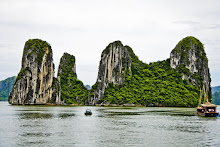
Tokyo (東京 ,Tōkyō?), officially Tokyo Metropolis (東京都 ,Tōkyō-to?),[2] is one of the 47 prefectures of Japan and is located on the eastern side of the main island Honshū. The twenty-three special wards of Tokyo, each governed as a city, cover the area that was once the city of Tokyo in the eastern part of the prefecture, totalling over 8 million people. The population of the prefecture exceeds 12 million. The prefecture is the center of the Greater Tokyo Area, the world's most populous metropolitan area with 35 million people and the world's largest metropolitan economy with a GDP of US$1.191 trillion at purchasing power parity in 2005.

Tokyo is the seat of the Japanese government and the Imperial Palace, and the home of the Japanese Imperial Family.
Tokyo was originally a small fishing village named Edo. In 1457, Ōta Dōkan built Edo Castle. In 1590, Tokugawa Ieyasu made Edo his base and when he became shogun in 1603, the town became the center of his nationwide military government. During the subsequent Edo period, Edo grew into one of the largest cities in the world with a population topping one million by the 18th century.[6] It became the de facto capital of Japan[7] even while the emperor lived in Kyoto, the imperial capital. After about 263 years, the shogunate was overthrown under the banner of restoring imperial rule. In 1869, the 17-year-old Emperor Meiji moved to Edo. Tokyo was already the nation's political and cultural center,[8] and the emperor's residence made it a de facto imperial capital as well with the former Edo Castle becoming the Imperial Palace. The city of Tokyo was established, and continued to be the capital until it was abolished as a municipality in 1943 and merged with the "Metropolitan Prefecture" of Tokyo.

Tokyo is the seat of the Japanese government and the Imperial Palace, and the home of the Japanese Imperial Family.
Tokyo was originally a small fishing village named Edo. In 1457, Ōta Dōkan built Edo Castle. In 1590, Tokugawa Ieyasu made Edo his base and when he became shogun in 1603, the town became the center of his nationwide military government. During the subsequent Edo period, Edo grew into one of the largest cities in the world with a population topping one million by the 18th century.[6] It became the de facto capital of Japan[7] even while the emperor lived in Kyoto, the imperial capital. After about 263 years, the shogunate was overthrown under the banner of restoring imperial rule. In 1869, the 17-year-old Emperor Meiji moved to Edo. Tokyo was already the nation's political and cultural center,[8] and the emperor's residence made it a de facto imperial capital as well with the former Edo Castle becoming the Imperial Palace. The city of Tokyo was established, and continued to be the capital until it was abolished as a municipality in 1943 and merged with the "Metropolitan Prefecture" of Tokyo.

Tokyo, Japan

Shinjuku, Tokyo, Japan

Shibuya, Tokyo, Japan

Aucun commentaire:
Enregistrer un commentaire